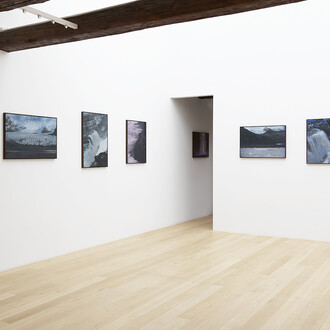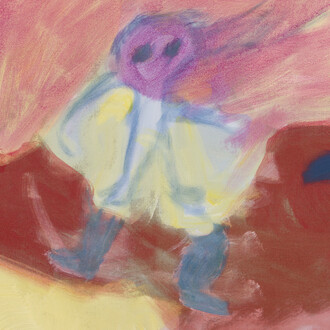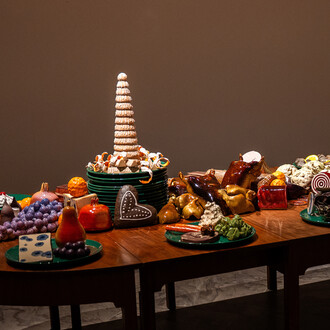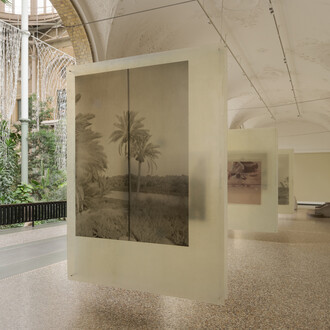At the exhibition, the visitor first of all encounters Nina Beier’s installation Liquid Assets from 2013. As the title suggests, and typically for Beier, the concept of ‘value’ is placed in focus, and the relationship between art and market is explored – in this case via a disassembled bronze statue of a knight , presented in display cases that mimic a national museum context. The original context and meaning has been erased in favour of the value of the material and the object’s newly-acquired categorisation as ‘Art’.
The conceptual focus continues in the next room, where Dag Erik Elgin presents a selection from his new series of paintings Mirror falling from the Wall from 2017. All of the works measure 110 x 92 cm, with the image field divided into two rectangles – one without a ground, and one covered in oil paint in various colours. The dimensions and composition are a direct reference to Caravaggio's Narcissus (1597-99), while the words in the paintings are a combination of actual information about the work – such as the number of staples and amount of binding agent used – and concepts closely related to painting as a centuries-old practice and myth.
Annika von Hausswolff’s photographic works occupy the final room in the west wing. Hausswolff is known for her staged photography, in which she makes use of the documentary power of the medium and arouses the curiosity of the viewer to know the foregoing story – what happened here? I am the Runway of Your Thoughts from 2008, in which a young woman poses with a small model aircraft, is in line with this. The series has clear phallic references, but takes its starting-point in the artist’s own fear of flying and an attempt to overcome this. There is a similarly personal starting-point in What My Mother Taught Me, which derives from the artist's memory of a hand game her mother played with her when she was a child.
Investing yourself and your origins in the work is also an approach utilised by the Icelandic artist Ragnar Kjartansson. In the gallery’s east-facing room, Kjartansson shows five paintings from the series Architecture and Morality from 2016. Kjartansson spent two weeks on the West Bank in the Israeli settlements, where he painted the houses and the view around him; everyday life in its most banal form – laundry, a house, a bicycle – in one of the most volatile political hot spots in the world and our time.
In the adjacent room, Kaarina Kaikkonen exhibits her textile works. I Had The Upper Hand and I make mistakes are both sculptural installations with female connotations, formed from men’s shirts and suits. Similarly, I Tried To Organize My Life is a labyrinthine, free-flowing formation of rolled-up shirts that throws a play of shadows on the wall behind it. Childhood memories of her parents – including her father’s early death – form a continuous theme for the Finnish artist, materialized through the strong symbolic value and charge of the textiles.















